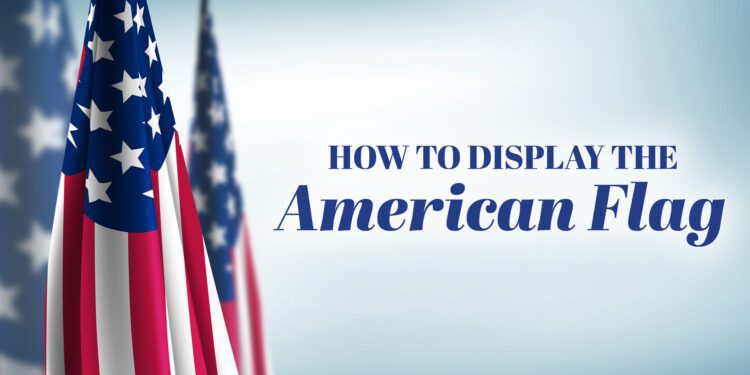by Kym Byrnes
For many, the American flag represents a sense of patriotism and the freedoms and liberties we have collectively fought hard for. Old Glory can be found hanging everywhere from homes and businesses to schools and gyms. But it’s important to know the rules that come with handling a flag, and there are more than a few. In 1923, the U.S. National Flag Code was created and became public law in 1942. The Code lays out the ways to display and respectfully handle the flag. It states that “the flag represents a living country and is itself considered a living thing.”
Handling/Displaying the Flag
- It should never be displayed upside down, except to convey a sign of distress or great danger
- It should never touch anything beneath it including water, merchandise, the ground or the floor.
- When displayed against a wall (vertically or horizontally), the union (blue part) should be uppermost and to the left (the left for the person observing the flag).
- Dirty, ripped, wrinkled or frayed flags should not be used.
- When displaying the U.S. flag with other flags, the U.S. flag comes first and is centered in the middle of the flag display. In addition, the U.S. flag must be placed higher than other flags, unless other international flags are present, in which case the U.S. flag would be the same height.
- The U.S. flag flies at half-staff (or half-mast) when the nation or a state is in mourning. The president, a state governor or the mayor of the District of Columbia, can order flags to fly at half-staff. Most often, this is done to mark the death of a government official, military member or first responder; or, in honor of Memorial Day or other national day of remembrance; or following a national tragedy.
- Do not use the flag as clothing.
- Do not store the flag where it can get dirty.
- Do not fasten it or tie it back. Always allow it to fall free.
- Do not draw on, or otherwise mark the flag.
Local Information
American Legion chapters in Westminster, Hampstead and Sykesville accept flags to be disposed of and may also have flag disposal ceremonies on Flag Day (June 14).
The Carroll County Farm Museum hosts a Flag Day Ceremony on June 14 at which local Boy Scouts retire and properly dispose of American Flags.
How to properly dispose of a U.S. flag
In 1937, the American Legion passed a resolution about flag retirement ceremonies that says “the approved method of disposing of unserviceable flags has long been that they be destroyed by burning.” It is considered such a sacred symbol that burning it in an undignified manner constitutes desecration. There is a specific ceremony to properly dispose of an American flag.
Many state and county government offices and Veterans of Foreign Wars posts have flag disposal boxes outside of their buildings. Some police stations also collect them.
Learn more about disposing of worn out flags at www.defense.gov/News/Feature-Stories/story/article/2206946/how-to-properly-dispose-of-worn-out-us-flags/
Facts about the flag
- The flag’s 13 alternating red and white stripes represent the 13 original colonies. Its 50 white stars on a blue field represent the 50 states.
- What do the colors on the flag represent? Red is for valor and bravery, white is for purity and innocence, and blue is for vigilance, perseverance and justice.













